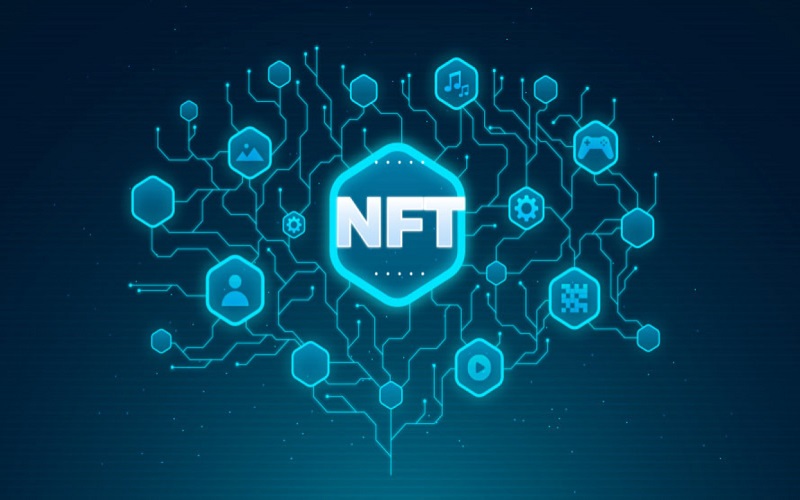NFT (Non-Fungible Token) marketplaces have gained significant popularity in recent years. These platforms allow users to buy, sell, and trade digital assets that are unique and indivisible, thanks to blockchain technology. If you’re interested in developing an NFT marketplace, here’s a high-level overview of the process:
Define your objectives: Determine the specific goals and features of your NFT marketplace. Consider factors like target audience, types of assets to be traded (artwork, collectibles, virtual real estate, etc.), and the blockchain platform you want to build on (Ethereum, Binance Smart Chain, etc.).
Choose a blockchain platform: Select the blockchain technology that aligns with your project’s requirements. Ethereum is currently the most popular choice for NFTs due to its established ecosystem, but other platforms like Binance Smart Chain, Flow, or Solana offer alternatives.
Smart contract development: NFTs are typically created and managed through smart contracts, self-executing agreements stored on the blockchain. You’ll need to develop or customize smart contracts to handle the creation, ownership, and transfer of NFTs. Solidity is a common programming language for Ethereum smart contracts.
Front-end development: Design and develop the user interface (UI) and user experience (UX) for your marketplace. Users should be able to browse, search, and interact with NFTs easily. Consider features like auctions, bidding, fixed-price sales, and categories to enhance usability.
Wallet integration: Users will need digital wallets to hold and manage their NFTs. Integrate popular cryptocurrency wallets (such as MetaMask) or develop your own wallet functionality within your platform. This integration enables seamless transactions and ownership verification.
Payment and transaction handling: Implement a secure payment gateway to facilitate transactions between buyers and sellers. Cryptocurrencies like Ether (ETH) or other platform-specific tokens are commonly used for NFT purchases. Ensure proper handling of funds, escrow services, and transaction fees.
Security and smart contract auditing: Prioritize security to protect users’ assets and personal information. Perform thorough security audits on your smart contracts to identify and address vulnerabilities. Engage third-party auditors or security experts for an objective evaluation.
Community and social features: Foster a vibrant community around your marketplace. Implement social features like user profiles, ratings, reviews, comments, and forums. Encourage artists, creators, and collectors to engage with each other and build a sense of community.
Legal compliance: Understand and adhere to relevant legal and regulatory requirements, including data protection, intellectual property rights, anti-money laundering (AML), and know-your-customer (KYC) regulations. Consult legal experts to ensure compliance.
Launch and marketing: Once development and testing are complete, launch your NFT marketplace. Create a marketing strategy to attract artists, collectors, and users to your platform. Leverage social media, content marketing, partnerships, and events to promote your marketplace.
Remember that building a successful NFT marketplace requires continuous improvement, active community management, and staying up to date with the evolving blockchain and NFT landscape.
Best NFT Features
When developing an NFT marketplace, implementing the right features can enhance the user experience and differentiate your platform from others. Here are some of the best features to consider:
User-friendly interface: Design an intuitive and visually appealing interface that allows users to easily navigate and browse through NFTs. Make it easy to search, filter, and discover new and trending assets.
Multiple blockchain support: Consider supporting multiple blockchain platforms to provide users with more options. While Ethereum is currently dominant, integrating other popular blockchains like Binance Smart Chain or Flow can attract users with different preferences.
NFT creation tools: Provide users with tools to create their own NFTs directly on your platform. Include features like metadata management, tokenization, and customizable attributes to empower artists and creators.
Auctions and bidding: Enable users to participate in auctions or bidding for NFTs. This feature creates excitement and can lead to higher sales prices for valuable assets. Implement transparent and secure bidding mechanisms.
Royalties and secondary sales: Implement a royalty system that allows creators to earn a percentage of future sales whenever their NFTs are resold on the marketplace. This incentivizes artists and encourages them to promote their works on your platform.
Fractional ownership: Introduce fractional ownership, allowing users to purchase a fraction of an NFT rather than the whole asset. This feature can make high-value NFTs more accessible to a broader audience.
Social and community features: Foster a sense of community by including social features such as user profiles, comments, likes, and followers. Encourage users to engage with each other, follow their favorite artists, and discover new collections.
Verification and provenance: Implement mechanisms to verify the authenticity and provenance of NFTs. This can involve linking to external content or leveraging blockchain metadata to provide transparent ownership histories.
Wallet integration: Integrate popular cryptocurrency wallets or provide a built-in wallet solution within your platform. Seamless integration allows users to manage their funds and NFTs conveniently.
Analytics and insights: Provide artists and collectors with comprehensive analytics and insights on their NFTs’ performance. This includes data on views, sales, bids, and other relevant metrics to help users make informed decisions.
Mobile app support: Develop a mobile application for your NFT marketplace to cater to users who prefer accessing platforms through their smartphones. This increases accessibility and convenience.
Secure and transparent transactions: Prioritize security by implementing robust encryption, secure transactions, and decentralized storage for NFTs. Users should feel confident that their assets are protected.
Remember to continually gather user feedback and monitor trends in the NFT space to evolve and enhance your platform with new features over time.




